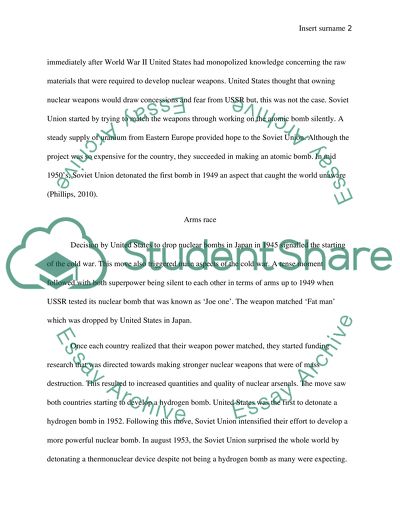Cite this document
(“Cold War - Arms Race Between US and USSR Which Lead to the Fall of Research Paper”, n.d.)
Retrieved from https://studentshare.org/history/1456663-cold-war-arms-race-between-us-and-ussr-which-lead
Retrieved from https://studentshare.org/history/1456663-cold-war-arms-race-between-us-and-ussr-which-lead
(Cold War - Arms Race Between US and USSR Which Lead to the Fall of Research Paper)
https://studentshare.org/history/1456663-cold-war-arms-race-between-us-and-ussr-which-lead.
https://studentshare.org/history/1456663-cold-war-arms-race-between-us-and-ussr-which-lead.
“Cold War - Arms Race Between US and USSR Which Lead to the Fall of Research Paper”, n.d. https://studentshare.org/history/1456663-cold-war-arms-race-between-us-and-ussr-which-lead.


